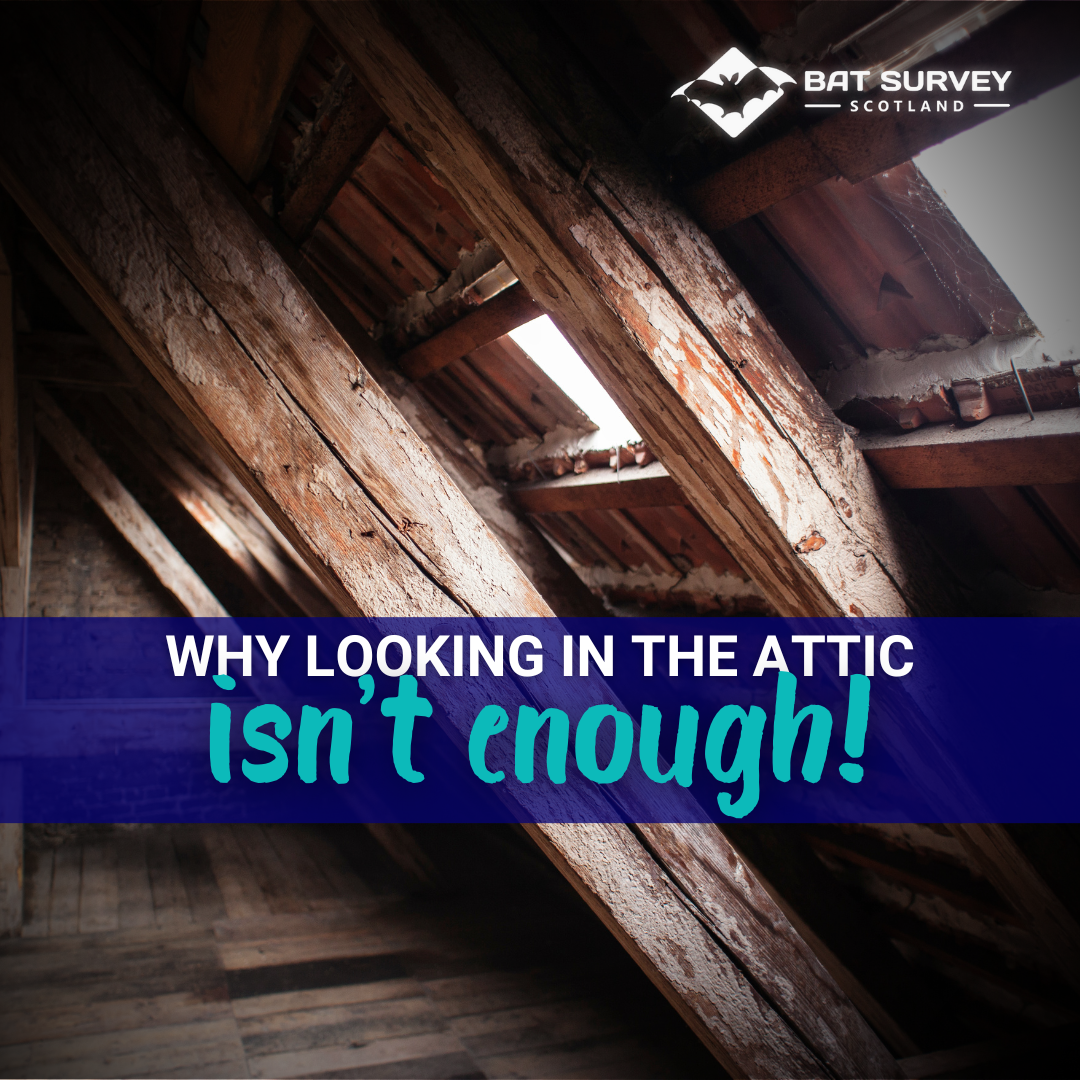4 Bat Survey Questions Asked and Answered
The last thing you want when you’re planning a renovation or development project is an unexpected delay or cost. To make sure you’re not caught out, here are your top 5 bat survey questions asked and answered!
#1 What is a bat survey?
Bat Surveys happen in two stages:
Stage 1 - Preliminary Roost Assessment
The first stage is a daylight search for bats, bat signs, and bat-suitable structures and habitats.
An experienced, licensed member of our team will visit your property and check out the outside and any roof voids or attics. We’ll also do a search for existing records of roosts nearby.
Stage 2 - Bat Activity Survey
If needed based on the findings from stage 1, we’ll proceed with stage 2 - the activity survey. Bat activity surveys take place around dawn or dusk, with a team of our surveyors watching for bats entering or leaving their roosts. We will identify where any bats are coming from and travelling to, and identify the species seen on site.
We will usually complete several of these surveys across different days in order to get a complete picture.
Once your required surveys are complete, we’ll send you a report with our findings, including which species were found (if any) and your next steps for licensing and mitigation (if needed).
Bat Survey Fun Fact: Just as you can identify birds from their calls, flight pattern and behaviour, we can do the same with bats! Our surveyors are equipped with ultrasonic detectors so we can “hear” bat calls, and when it gets really dark we switch to using infra-red video cameras.
#2 What kind of survey do I need?
The best way to find out is to get in touch with us - there is no one-size-fits-all answer!
We will usually start by completing stage 1 - a preliminary roost assessment. Depending on the results from this, we’ll be able to advise you on the level stage 2 surveying effort you’ll need based on the likelihood of bats roosting in your property…
If we find no signs of roosts and no structures where bats could be roosting, you won’t need a stage 2 survey - the report from stage 1 will be enough for you to proceed with your proposed work and planning application.
If there are signs of bats or structures that could be used as roosts, we will complete up to 3 nights of bat activity surveys. The number of surveys needed depends not only on your property, but on the surrounding area and previous records of roosts.
These assessments are governed by national guidelines and adopted by local planning authorities. Far from bats stopping your plans, these surveys allow us to help you to stay on track and stay in line with the laws protecting bats in the UK.
#3 I need a bat survey - when can they be carried out?
Bat signs and structures with roost potential are visible year round, so stage 1 surveys can take place at any time of year.
Bats themselves, however, hibernate. That means we can only do stage 2 (bat activity) surveys between the 1st of May and 30th of September, with at least one visit taking place before the 31st of August. This short season for carrying out bat surveys means the sooner you get in touch, the better we can support your proposed works!
#4 How much will bat surveys delay my project?
Bat activity surveys are seasonal, and regardless of the time of year the best way to minimise disruption is to get in touch with us early on in your project. We will always start surveys as soon as possible, and if you have a specific deadline (e.g. for a planning hearing), let us know and we will do everything we can to assist.
If you require more than 1 activity survey, they will need to be at least 3 weeks apart (although more time between them yields better results), and, depending on those findings, we may require time for licence applications to go through.
If you need a bat survey (or think you might) get in touch with our team of specialist ecologists!
Or read more of our latest blogs here:




